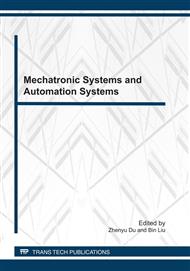p.52
p.57
p.62
p.66
p.70
p.75
p.79
p.84
p.88
Numerical Simulation of Inner Flow Yield of Turbulence Generator of Papermachine Headbox and Structure Optimal Design
Abstract:
Turbulence generator is a key part of head box of middle or high speed papermachine. It is used to make the fiber flow smooth and steady. This paper gives simulation researches of the flow status on one turbulent tube of combined-turbulence generator, result shows that there is an optimal rate between the square tube and its equivalent diameter for Round-Square turbulence generator, and the equivalent diameter is 6.5. This guides the design of turbulence generator significantly.
Info:
Periodical:
Pages:
70-74
Citation:
Online since:
June 2011
Authors:
Price:
Сopyright:
© 2011 Trans Tech Publications Ltd. All Rights Reserved
Share:
Citation:


